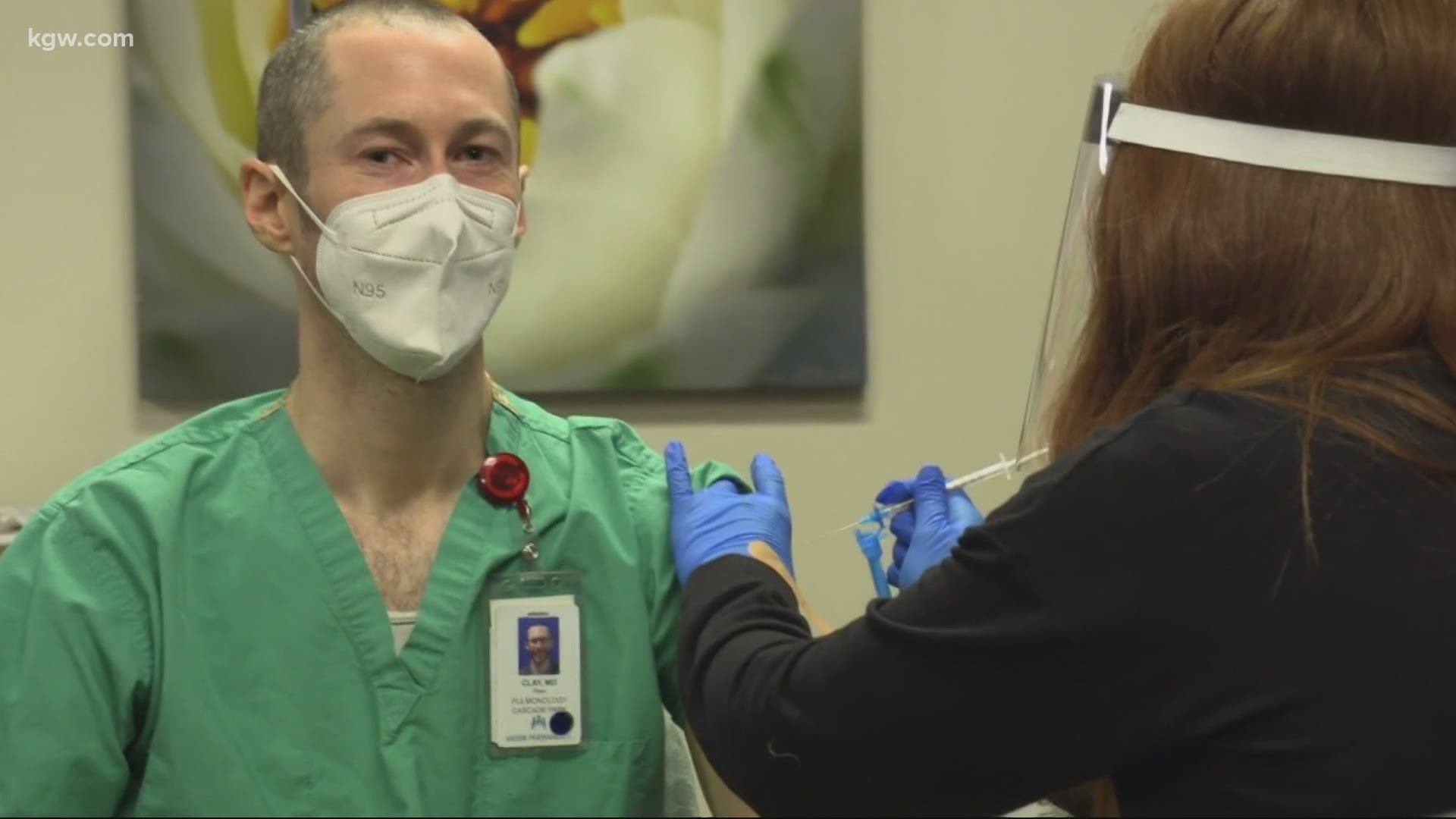PORTLAND, Oregon — The Oregon Health Authority (OHA) is doing away with the four-tier system that determined who was eligible for COVID-19 vaccinations in the first 1A group. The result is that 300,000 to 400,000 people are now all eligible to get the shots immediately.
Here’s a list of some of the types of jobs or settings which are now eligible. This is from the OHA website. The group tiers are now gone.
- Group 1: Hospitals; urgent care; skilled nursing and memory care facility health care providers and residents; tribal health programs; emergency medical services providers and other first responders.
- Group 2: Other long-term care facilities and congregate care sites, including health care providers and residents; hospice programs; mobile crisis care and related services; individuals working in a correctional setting; personnel of group homes for children or adults with intellectual and developmental disabilities.
- Group 3: Outpatient settings serving specific high-risk groups; in home care; day treatment services; non-emergency medical transportation.
- Group 4: Health care personnel working in other outpatient and public health settings.
The move came in response to criticism that the coronavirus vaccination program is moving much too slowly. Only 25% of the doses sent to Oregon have actually been used.
RELATED: Gov. Brown admits Oregon not vaccinating people fast enough, challenges OHA to 12,000 shots per day
OHA Director Patrick Allen defended the program. saying its on par with California in terms of how many people per 100,000 have gotten the shot.
“So far, Oregon has been good at getting vaccinations into the arms of people assigned to a specific location, like a hospital worker or a resident at a skilled nursing facility,” said OHA Director Patrick Allen. “Now we need to up our game for people outside those locations.
The state plans to get more doses to pharmacies and ask them to help with people who are part of that first eligible group.
The logistical challenge of getting the vaccine out of the freezers and into the arms of Oregonians is apparently much harder than most imagined. From picking who is eligible, to notifying them and where they can go, to how long they wait for side effects, and to how many people can be lined up, it's not been easy to streamline an efficient process.
Northwest Kaiser Permanente has received more than 18,000 doses and given out about 5,800. Doctor Katie Sharff is a leader in the effort. She said there's way more to it than giving flu shots.
“The goal is to get vaccines in arms and to provide immunizations to provide protection," Sharff said. "But logistically, doing that as we also maintain appropriate distancing precautions and understanding the logistics of these complex mRNA vaccines…its tricky."
She said doctors at Kaiser and elsewhere are reimagining vaccinations; trying to move away from giving shots at doctors’ offices and thinking about huge spaces like schools and coliseums that are not being used.
The learning curve is steep, but now everyone is brainstorming ways to get things moving.
Kaiser is thinking about using retired health care workers, nursing students and others who can give shots.
And even Sharff is thinking about how electronics can help, and how they may slow, the process.
“Is the standard electronic health record the right answer?" Sharff asked. "Probably not. I think there's probably a more efficient way in terms of documenting, cueing people, notifying people of when it’s their turn and identifying people that it’s their turn."

